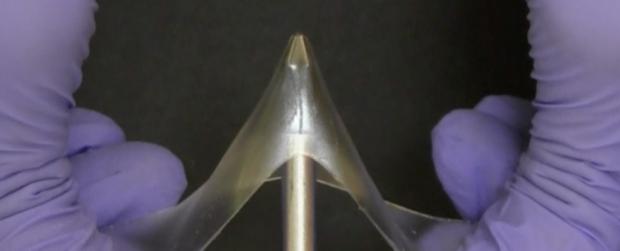
Breaking News
 Canada's MAID CULTURE OF DEATH Just Hit Rock Bottom: KILLING PRISONERS NOW!!!
Canada's MAID CULTURE OF DEATH Just Hit Rock Bottom: KILLING PRISONERS NOW!!!
 Weight gain single-handedly prevented by a gut microbe
Weight gain single-handedly prevented by a gut microbe
 Doug Casey on 2025's Defining Events and What Comes Next
Doug Casey on 2025's Defining Events and What Comes Next
 BREAKING: Officer Tatum & Other Investigators Believe A Potential Suspect In The Brown...
BREAKING: Officer Tatum & Other Investigators Believe A Potential Suspect In The Brown...
Top Tech News
 This tiny dev board is packed with features for ambitious makers
This tiny dev board is packed with features for ambitious makers
 Scientists Discover Gel to Regrow Tooth Enamel
Scientists Discover Gel to Regrow Tooth Enamel
 Vitamin C and Dandelion Root Killing Cancer Cells -- as Former CDC Director Calls for COVID-19...
Vitamin C and Dandelion Root Killing Cancer Cells -- as Former CDC Director Calls for COVID-19...
 Galactic Brain: US firm plans space-based data centers, power grid to challenge China
Galactic Brain: US firm plans space-based data centers, power grid to challenge China
 A microbial cleanup for glyphosate just earned a patent. Here's why that matters
A microbial cleanup for glyphosate just earned a patent. Here's why that matters
 Japan Breaks Internet Speed Record with 5 Million Times Faster Data Transfer
Japan Breaks Internet Speed Record with 5 Million Times Faster Data Transfer
 Advanced Propulsion Resources Part 1 of 2
Advanced Propulsion Resources Part 1 of 2
 PulsarFusion a forward-thinking UK aerospace company, is pushing the boundaries of space travel...
PulsarFusion a forward-thinking UK aerospace company, is pushing the boundaries of space travel...
 Dinky little laser box throws big-screen entertainment from inches away
Dinky little laser box throws big-screen entertainment from inches away
 'World's first' sodium-ion flashlight shines bright even at -40 ºF
'World's first' sodium-ion flashlight shines bright even at -40 ºF
This Glassy Gel Is a Surprising New Class of Material That Heals Itself

Stretchy, strangely adhesive, and able to 'self-heal' if cut, the surprising properties of these gels potentially make them useful for a wider range of applications than commonly-used plastics, which are either hard and brittle or soft and easily torn.
"We've created a class of materials that we've termed glassy gels, which are as hard as glassy polymers, but – if you apply enough force – can stretch up to five times their original length, rather than breaking," says Michael Dickey, materials scientist at North Carolina State University (NCSU).
But as with so many fortuitous scientific discoveries, the goal was never to make a whole new class of subtances, Dickey tells ScienceAlert.
"We stumbled into these interesting materials," he says, when NCSU researcher Meixiang Wang was experimenting with ionogels, materials made of a polymer swollen with an ionic liquid that conducts electricity.
Wang was trying to make stretchable, wearable devices that might be used in a pressure sensor, other medical devices or robotics. Altering the composition, Wang produced a gel that looked at first like a "mundane piece of transparent, flexible plastic" before testing showed it was very hard – but not brittle like other common plastics.
"Once we realized they have remarkable properties, we dove in to understand them better," Dickey says.
The glassy gels are made using an ionic liquid, which is similar to water but made entirely of charged particles, allowing it to conduct electricity. When mixed with a polymer precursor the liquid pushes the polymer chains apart, making the material soft and stretchy. At the same time, the ions are also strongly attracted to the polymer chains, preventing them from separating.



